- What Boosts the Tomato’s Wilting Ability?
- Genetic Varieties
- Proper Watering Techniques
- Nutrient Management
- Climate and Environmental Factors
- Pest and Disease Management
- Harvesting and Storage Techniques
- The Truth Behind an Intriguing Blend
- The Science Behind Tomato Wilting
- The Intriguing Blend
- The Reality Check
- The Bottom Line
- A Unique Combination of Ingredients
- 1. Organic Compounds
- 2. Beneficial Microorganisms
- 3. Natural Extracts
- Exploring the Science Behind It
- 1. Understanding the Blend Components
- 2. Analyzing Plant Responses
- 3. Examining Chemical Interactions
- 4. Assessing the Blend’s Impact on Plant Health
- 5. Field Studies
- Maximizing Tomato Health
- 1. Provide Proper Nutrition
- 2. Watering Techniques
- 3. Proper Spacing
- 4. Pest and Disease Management
- 5. Pruning and Support
- Enhancing Nutritional Value for Optimal Growth
- 1. Soil Preparation
- 2. Balanced Fertilization
- 3. Mulching
- 4. Companion Planting
- 5. Regular Monitoring and Adjustments
- 6. Proper Watering
- Increasing Tomato Yield
- 1. Choose the Right Variety
- 2. Provide Adequate Nutrients
- 3. Prune and Stake
- 4. Monitor Watering
- 5. Control Pests and Diseases
- 6. Provide Optimal Growing Conditions
- 7. Harvest at the Right Time
- Methods to Achieve Maximum Harvests
- 1. Proper Soil Preparation
- 2. Providing Adequate Watering
- 3. Implementing Mulching Techniques
- 4. Supporting Tomato Plants
- 5. Pruning and Suckering
- 6. Fertilizing at the Right Time
- 7. Controlling Pests and Diseases
- 8. Harvesting at the Right Time
- Tomato Wilting Prevention Techniques
- Maintaining Soil Moisture and Air Circulation
- “Question-Answer”
- What is the article about?
- Why is tomato wilting ability important?
- What is the intriguing blend mentioned in the title?
- What were the results of the study?
- What are the potential implications of these findings?
- Are there any limitations to the study?
- What are some natural compounds that could potentially boost tomato wilting ability?
- “Video” Grow Lots of Tomatoes… Not Leaves // Complete Growing Guide
Tomatoes are a beloved ingredient in many cuisines around the world. They add a burst of flavor and freshness to salads, sandwiches, and pasta dishes. However, tomatoes are also notorious for their delicate nature, as they are prone to wilting quickly.
Scientists have been working tirelessly to find ways to increase the shelf life of tomatoes and reduce the wilting process. One particular approach that has captured the attention of researchers is the use of an intriguing blend of natural compounds.
By combining certain compounds found in plants, such as cytokinins and jasmonates, researchers believe they can significantly enhance the wilting resistance of tomatoes. Cytokinins are known for their role in promoting cell division and growth, while jasmonates are involved in plant defense responses.
Preliminary studies have shown promising results, with tomatoes treated with this blend maintaining their firmness and freshness for a longer period of time. This breakthrough could have a significant impact on the tomato industry, allowing for better storage and transportation of tomatoes without compromising their quality.
Further research is still needed to fully understand the mechanisms behind this intriguing blend and its effects on tomato wilting. If successful, this innovation could revolutionize the way we view and use tomatoes, ensuring that they stay fresher for longer and are readily available for consumers to enjoy.
What Boosts the Tomato’s Wilting Ability?
Tomatoes are known for their juicy texture and vibrant flavor, but they are also notorious for being delicate and prone to wilting. Understanding what factors can boost the tomato’s wilting ability is crucial for ensuring a longer shelf life and improving the overall quality of the fruit.
Genetic Varieties
The genetic makeup of a tomato plant plays a significant role in determining its wilting ability. Some tomato varieties have been bred to withstand wilting better than others. These varieties often have thicker stems and stronger cell walls, which help them retain water more effectively and resist wilting. Breeders and scientists are continuously working on developing new varieties with improved wilting resistance.
Proper Watering Techniques
Providing the tomato plants with an adequate amount of water is crucial for maintaining their wilting ability. Overwatering can drown the roots and lead to waterlogging, while underwatering can cause dehydration and wilting. It is important to strike a balance and regularly monitor the soil moisture levels. Watering deeply but less frequently encourages the roots to grow deeper, resulting in a more robust plant with better wilting tolerance.
Nutrient Management
Tomato plants require a balanced supply of essential nutrients to maintain their overall health and wilting ability. Key nutrients that contribute to wilting resistance include nitrogen, potassium, and calcium. Nitrogen promotes leaf and stem growth, potassium enhances water uptake, and calcium strengthens cell walls. Properly managing nutrient levels and providing the necessary nutrients through fertilization can greatly boost the tomato’s wilting ability.
Climate and Environmental Factors
The climate and environmental conditions also play a role in determining the tomato’s wilting ability. Extreme temperatures, high humidity, and excessive sunlight can all contribute to wilting. Providing shade, optimizing ventilation, and protecting the plants from extreme weather conditions can help improve their wilting tolerance.
Pest and Disease Management
Pests and diseases can weaken tomato plants, making them more susceptible to wilting. Regular monitoring and effective pest and disease management practices are essential for maintaining plant health. This includes proper sanitation, timely detection and treatment of pests and diseases, and implementing preventive measures to minimize their impact.
Harvesting and Storage Techniques
The way tomatoes are harvested and stored can also impact their wilting ability. Harvesting at the right stage of ripeness and handling the fruit gently can prevent unnecessary stress and damage. Proper storage conditions, such as maintaining the optimal temperature and humidity levels, can help prolong the shelf life and maintain the tomato’s vigor.
Overall, a combination of genetic factors, proper plant care techniques, and effective management practices can boost the tomato’s wilting ability. By understanding and implementing these strategies, growers and consumers can enjoy tomatoes that stay fresh and flavorful for longer periods.
The Truth Behind an Intriguing Blend
If you are a fan of homegrown tomatoes, you may have heard about an intriguing blend that promises to boost the wilting ability of these delicious fruits. But what is the truth behind this fascinating concept? Let’s delve deeper into the world of tomato wilting and uncover the facts.
The Science Behind Tomato Wilting
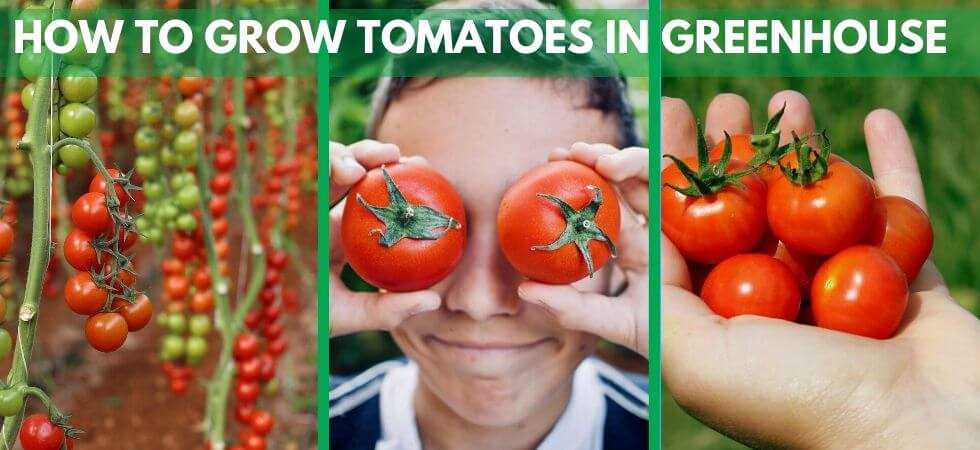
Tomato wilting occurs when the water balance within the plant is disrupted, leading to a loss of turgidity and drooping of leaves. This can be caused by various factors, including root damage, fungal infections, or environmental stressors such as high temperatures and drought.
When a tomato plant wilts, it can negatively impact the overall health and productivity of the plant. As a result, finding ways to enhance the wilting ability of tomatoes has gained significant interest among gardeners and researchers alike.
The Intriguing Blend
An intriguing blend that has caught the attention of tomato enthusiasts is a combination of certain organic compounds and nutrients. Proponents of this blend claim that it can improve the plant’s ability to resist wilting and increase its overall vitality.
The Reality Check
While the concept of an intriguing blend may sound enticing, it’s essential to approach it with a dose of skepticism. Although some organic compounds and nutrients have been shown to have positive effects on plant health, there is no magical formula that can completely eliminate tomato wilting.
It’s important to remember that tomato wilting is a complex issue influenced by various factors, including genetics, environmental conditions, and proper care practices. While the intriguing blend may offer some benefits, it is not a substitute for providing optimal growing conditions and implementing effective disease management strategies.
The Bottom Line
So, what’s the truth behind the intriguing blend that promises to boost tomato wilting ability? While it may have some positive effects, it’s crucial to keep in mind that there is no miracle cure for tomato wilting. Instead, focus on providing your tomatoes with the right growing conditions, such as well-drained soil, adequate water, and proper nutrition.
In conclusion, the intriguing blend may be a fascinating concept, but it is not the ultimate solution to tomato wilting. By understanding the science behind tomato wilting and implementing proper care practices, you can give your homegrown tomatoes the best chance of thriving.
A Unique Combination of Ingredients
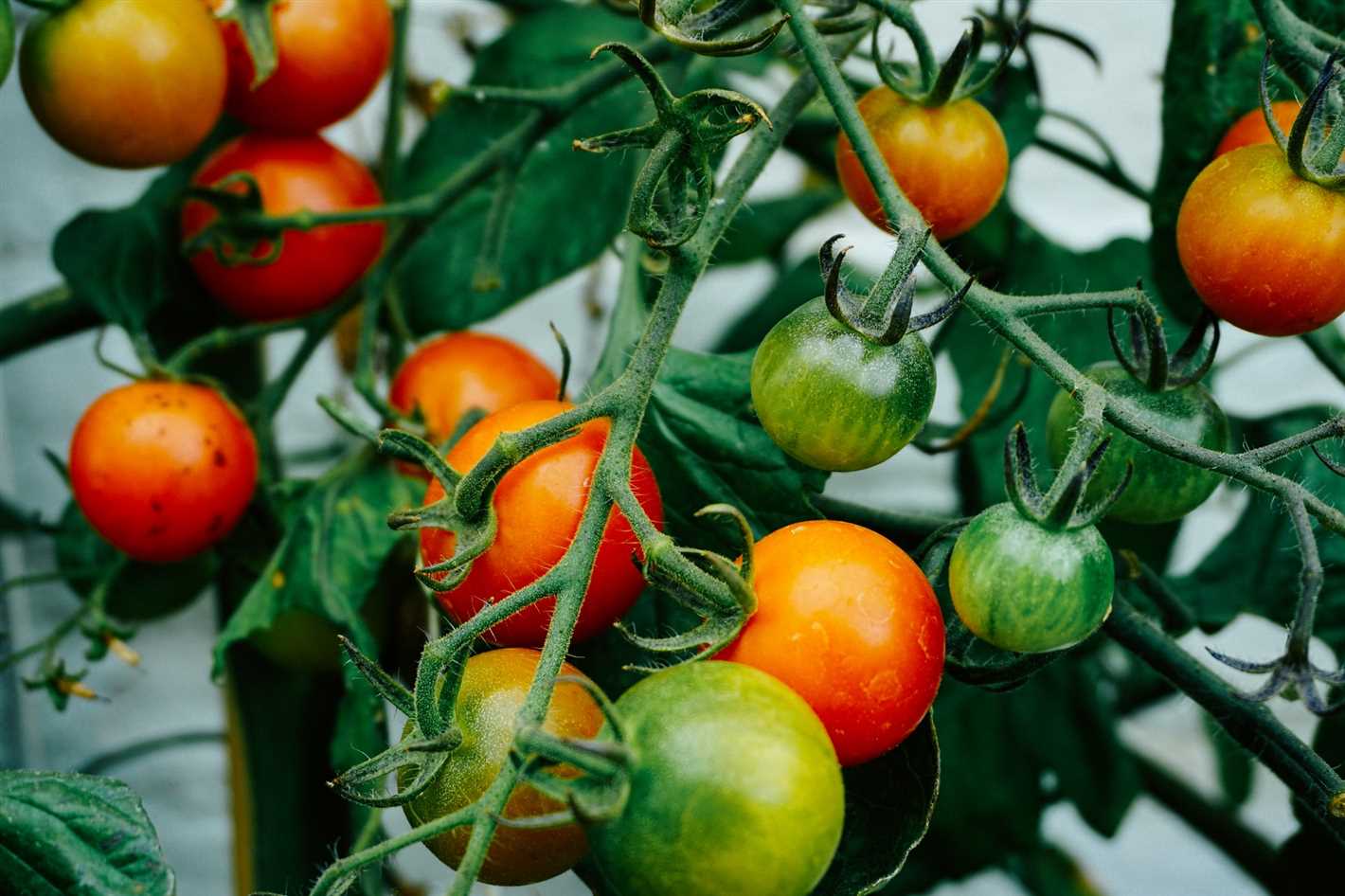
The blend that has shown promising results in boosting tomato wilting ability consists of a unique combination of ingredients that work together to enhance the plant’s resistance against wilt-causing pathogens and environmental stressors.
1. Organic Compounds
- Salicylic acid (SA): known for its role in triggering plant defense responses, SA helps activate the plant’s immune system and enhance its resistance to wilt.
- Jasmonic acid (JA): a signaling molecule involved in plant defense mechanisms, JA helps regulate the immune response of tomatoes and strengthen their resistance to wilt.
- Abscisic acid (ABA): a hormone that plays a crucial role in plant stress responses, ABA helps tomatoes cope with environmental stressors and maintain their vitality even under adverse conditions.
2. Beneficial Microorganisms
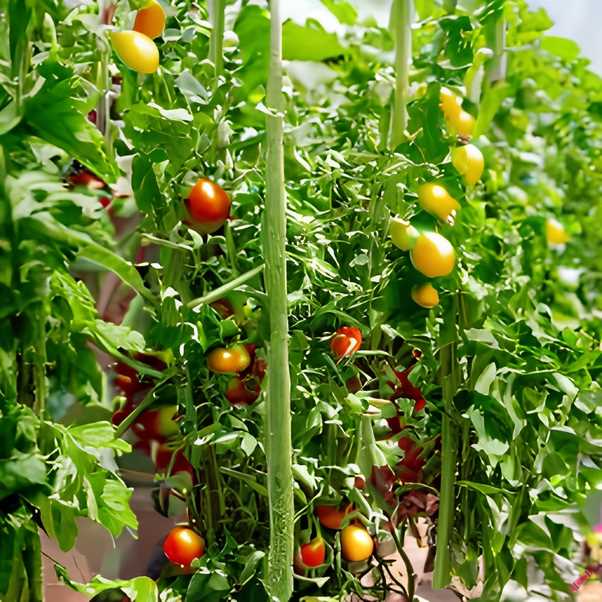
The combination also includes certain beneficial microorganisms that establish a symbiotic relationship with tomato plants, promoting their growth and providing protection against pathogens. These microorganisms include:
- Mycorrhizal fungi: these fungi form mutually beneficial associations with plant roots, enhancing nutrient uptake and improving the plant’s overall health and resistance to diseases.
- Rhizobacteria: these bacteria colonize the root zone of tomatoes and produce compounds that suppress the growth of wilt-causing pathogens, ensuring better plant health and productivity.
3. Natural Extracts
Finally, the unique blend incorporates natural extracts derived from certain plants that possess antimicrobial and antioxidant properties. These extracts help protect tomatoes from fungal and bacterial infections, as well as oxidative stress resulting from environmental factors. Some of the natural extracts commonly used in the blend include neem oil, garlic extract, and rosemary extract.
By combining these organic compounds, beneficial microorganisms, and natural extracts, researchers have been able to develop a blend that effectively enhances tomato plants’ resistance to wilt and promotes overall plant health. Continued research and experimentation are being conducted to further refine the blend and optimize its application for maximum benefits.
Exploring the Science Behind It
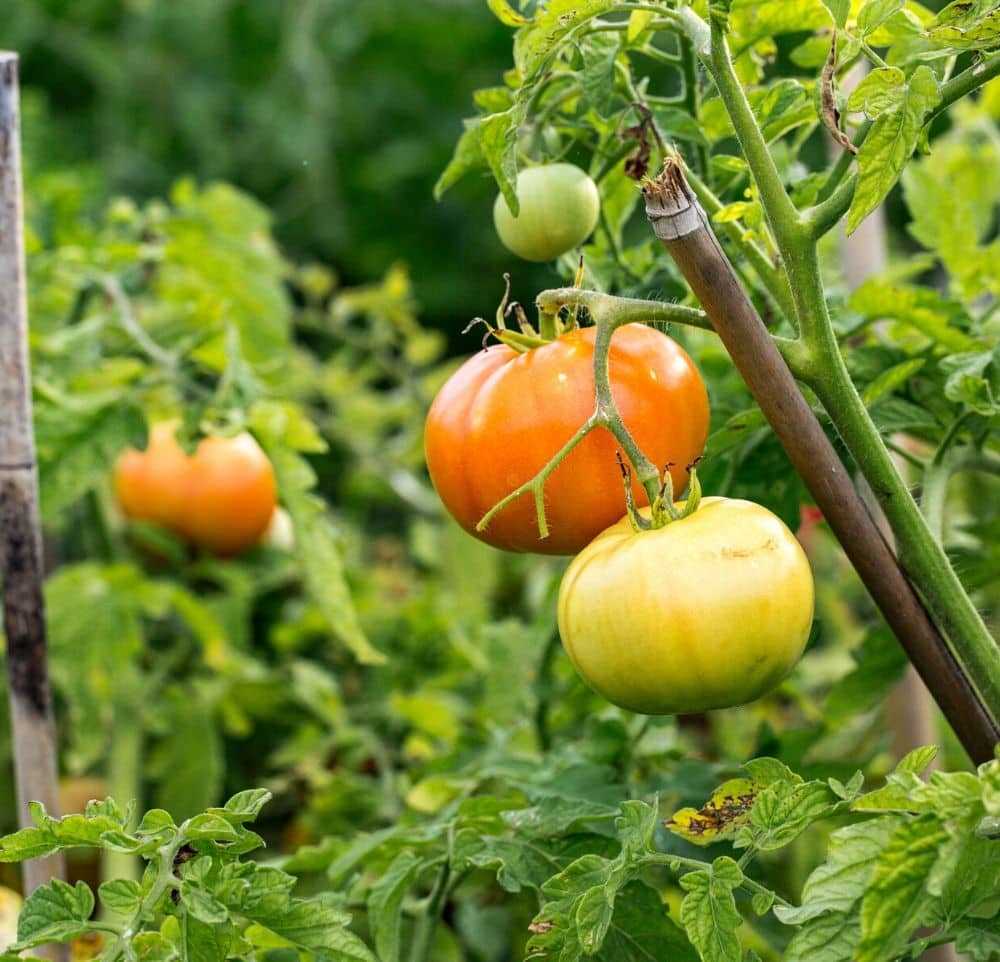
When it comes to the intriguing blend that supposedly boosts tomato wilting ability, scientists have delved into the science behind this phenomenon. Through extensive research and experimentation, they have uncovered some interesting findings.
1. Understanding the Blend Components
One of the first steps in exploring the science behind this blend is to understand its components. The blend is composed of several natural ingredients, including organic compounds and nutrients that are beneficial for plant growth. These components work together to enhance the tomato plant’s ability to withstand wilting.
2. Analyzing Plant Responses
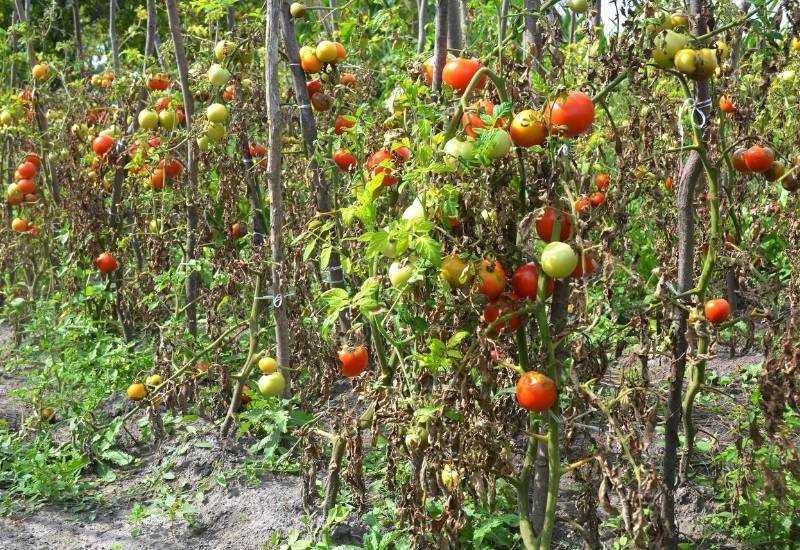
Scientists have conducted numerous experiments to analyze the responses of tomato plants when treated with the intriguing blend. They have observed that plants treated with the blend exhibit increased water retention capabilities, resulting in reduced wilting. This suggests that the blend somehow improves the plant’s ability to retain water, keeping it hydrated even in dry conditions.
3. Examining Chemical Interactions
Chemical interactions between the blend components and the tomato plants have also been a focus of scientific investigation. Researchers have discovered that certain compounds in the blend interact with the plant’s cell structure, promoting better water absorption and retention. This interaction helps the plant maintain its turgidity, preventing wilting.
4. Assessing the Blend’s Impact on Plant Health
In addition to studying wilting ability, scientists have also assessed the blend’s impact on overall plant health. They have found that the blend acts as a natural fertilizer, providing essential nutrients to the plants. This enhances their overall growth and resilience, making them less prone to disease and other environmental stressors.
5. Field Studies
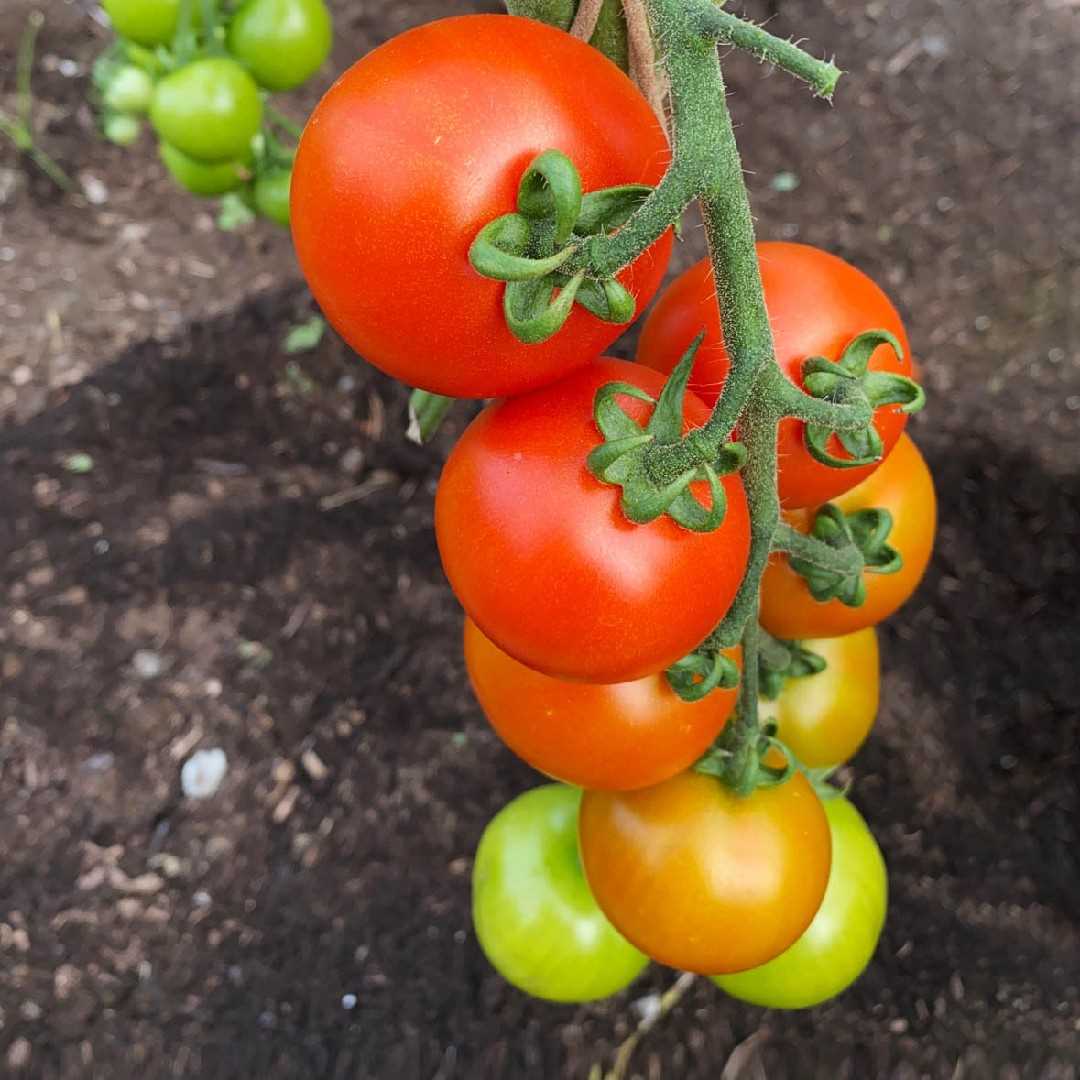
To validate the laboratory findings, scientists have conducted field studies using tomato plants treated with the intriguing blend. These studies have shown promising results, with the treated plants exhibiting better wilting resistance and overall health compared to untreated plants. The blend has the potential to revolutionize tomato farming by improving crop yield and reducing losses due to wilting.
| Component | Effect |
|---|---|
| Organic compounds | Promote water retention |
| Nutrients | Enhance plant growth |
| Chemical interactions | Improve water absorption |
| Overall effect | Increased wilting resistance and plant health |
The exciting findings from these studies open up new possibilities for agricultural practices and plant breeding techniques. Further research is needed to fully understand the mechanisms behind the intriguing blend and optimize its application in different tomato varieties and growing conditions.
Maximizing Tomato Health
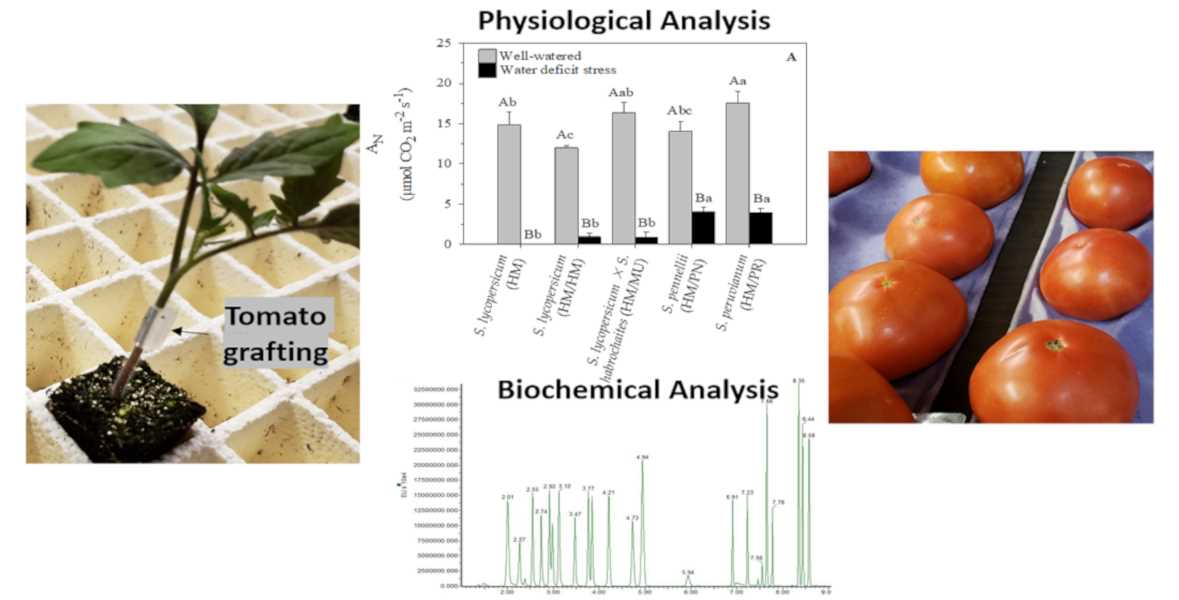
Healthy tomato plants are key to achieving a bountiful harvest. Here are some tips to maximize tomato health:
1. Provide Proper Nutrition
- Use a well-balanced fertilizer to provide essential nutrients such as nitrogen, phosphorus, and potassium.
- Monitor the pH level of the soil and adjust if necessary to ensure optimal nutrient uptake.
- Consider supplementing with organic matter, compost, or mulch to improve soil fertility.
2. Watering Techniques
- Water tomato plants deeply and infrequently to encourage deep root growth.
- Avoid overhead watering to minimize the risk of fungal diseases.
- Water early in the morning to allow foliage to dry quickly and prevent disease development.
3. Proper Spacing
- Plant tomatoes in rows or spaced apart to improve air circulation and reduce the risk of disease.
- Avoid overcrowding by providing enough space between plants.
4. Pest and Disease Management
- Regularly inspect tomato plants for signs of pests or diseases.
- Remove any infected or damaged leaves promptly to prevent the spread of diseases.
- Consider using organic pest control methods such as companion planting or natural predators.
5. Pruning and Support
- Prune tomato plants by removing suckers to increase airflow and promote larger fruit production.
- Provide support such as cages, trellises, or stakes to prevent sprawling and to support heavy fruit.
By following these tips, you can maximize the health and productivity of your tomato plants and enjoy a bountiful harvest.
Enhancing Nutritional Value for Optimal Growth
Proper nutrition plays a crucial role in the growth and development of tomato plants. By providing essential nutrients, you can ensure optimal growth and enhance the plant’s resistance against various diseases, pests, and environmental stressors.
Here are some key ways to enhance the nutritional value of tomato plants:
1. Soil Preparation
Start by preparing the soil before planting tomato seedlings. Ensure that the soil is rich in organic matter, such as well-rotted compost or aged manure. These organic materials increase the nutrient content of the soil, promote good drainage, and enhance the soil’s water-holding capacity.
2. Balanced Fertilization
Tomato plants require a balanced supply of nutrients, including macronutrients (nitrogen, phosphorus, and potassium) and micronutrients (iron, manganese, zinc, etc.). Use a balanced fertilizer specifically formulated for tomatoes, following the recommended application rates. Regular soil testing can help you determine the nutrient needs of your plants accurately.
3. Mulching
Applying mulch around tomato plants helps to conserve moisture, suppress weed growth, and regulate soil temperature. Organic mulches, such as straw or wood chips, gradually decompose and add nutrients to the soil, improving its fertility. They also provide a protective layer that prevents nutrient leaching and erosion.
4. Companion Planting
Some plants, when grown alongside tomatoes, can help enhance their nutritional value. For instance, planting basil, marigold, or borage near tomato plants can repel pests and improve overall plant health. Additionally, leguminous plants like beans or peas can fix atmospheric nitrogen and enrich the soil.
5. Regular Monitoring and Adjustments
Monitor your tomato plants regularly throughout the growing season. Look for signs of nutrient deficiencies or excesses, such as yellowing leaves or stunted growth. Adjust your fertilization regimen accordingly to maintain optimal nutrient levels for healthy plant growth.
6. Proper Watering
Consistent and adequate watering is essential for nutrient absorption. Ensure that tomato plants receive deep watering, allowing the water to reach their root zones. Avoid overwatering, as it can cause nutrient leaching and promote the growth of fungal diseases.
By implementing these strategies, you can enhance the nutritional value of tomato plants and promote optimal growth. Remember to provide a well-balanced fertilizer, amend the soil with organic matter, and monitor the plant’s health regularly. With proper nutrition, your tomato plants will thrive and produce healthy, flavorful fruits.
Increasing Tomato Yield
Tomatoes are one of the most popular and widely grown fruits in the world, prized for their versatility and rich flavor. However, maximizing tomato yield can be a challenge for many growers. Here are some tips and techniques to help increase tomato yield:
1. Choose the Right Variety
Selecting the right tomato variety for your growing conditions is crucial for maximizing yield. Some varieties are more resistant to diseases and pests, while others are better suited for specific climates or growing methods. Do some research and choose a variety that is known for high yield potential.
2. Provide Adequate Nutrients
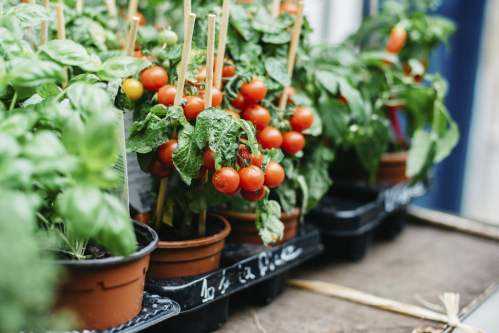
Tomatoes are heavy feeders and require a steady supply of nutrients throughout the growing season. Prior to planting, prepare the soil by adding organic matter and a balanced fertilizer. During the growing season, regularly fertilize with a balanced fertilizer or apply organic amendments such as compost or manure.
3. Prune and Stake
Pruning and staking tomato plants can help increase air circulation and prevent diseases, as well as improve sunlight exposure. Remove suckers, which are small shoots that grow in the leaf axils, and tie the main stem to a stake or trellis for support. This allows the plant to focus its energy on producing fruit rather than excessive foliage.
4. Monitor Watering
Consistent and adequate watering is essential for tomato plants. Too much or too little water can impact yield and fruit quality. Water evenly and deeply, aiming for about 1-2 inches of water per week. Avoid overhead watering, as it can promote the spread of diseases. Mulching around the plants can help retain moisture and regulate soil temperature.
5. Control Pests and Diseases
Tomatoes are susceptible to a variety of pests and diseases, which can significantly reduce yield. Implement a pest management program that includes regular monitoring, proper sanitation, and the use of organic or chemical controls when necessary. Proper crop rotation and companion planting can also help deter pests and reduce disease pressure.
6. Provide Optimal Growing Conditions
Tomatoes thrive in full sun and warm temperatures. Choose a location that receives at least 6-8 hours of direct sunlight per day. Avoid planting in areas prone to cold drafts or strong winds, as they can damage plants. Maintain proper spacing between plants to ensure good air circulation.
7. Harvest at the Right Time
Harvesting tomatoes at the right time can help maximize yield and flavor. Wait until the fruit is fully ripe before picking, as this ensures optimal sweetness and juiciness. Do not leave ripe tomatoes on the vine for too long, as they can become overripe and prone to rot.
By following these tips and techniques, you can increase tomato yield and enjoy a bountiful harvest of delicious and nutritious tomatoes.
Methods to Achieve Maximum Harvests
Growing healthy and robust tomato plants requires careful planning and adherence to specific practices. By following these methods, you can ensure maximum harvests of your tomatoes.
1. Proper Soil Preparation
Start by preparing the soil before planting your tomato seedlings. Tomato plants thrive in well-drained soil with a pH level between 6.0 and 6.8. Amend the soil with organic matter such as compost or well-rotted manure to improve its fertility and drainage.
2. Providing Adequate Watering
Water your tomato plants deeply and regularly to ensure proper growth and yield. Aim to provide at least one inch of water per week, especially during hot and dry periods. However, be careful not to overwater, as it can lead to root rot and other diseases.
3. Implementing Mulching Techniques
Apply a layer of organic mulch such as straw or wood chips around the base of your tomato plants. Mulching helps conserve soil moisture, suppresses weeds, and regulates soil temperature. Additionally, it prevents soil-borne diseases from splashing onto the plant during heavy rains.
4. Supporting Tomato Plants
Tomato plants require support to ensure proper growth and prevent the fruits from touching the ground. Use stakes, trellises, or cages to support the plants as they grow. This will also make it easier to harvest the fruits and increase airflow, reducing the risk of diseases.
5. Pruning and Suckering
Regularly prune your tomato plants to remove suckers, which are the side shoots that emerge from the leaf axils. Suckering allows the plant to focus its energy on fruit production rather than excessive foliage. Additionally, prune any diseased or damaged leaves to prevent the spread of diseases.
6. Fertilizing at the Right Time
Apply a balanced fertilizer, such as a 10-10-10 or 14-14-14 blend, when planting your tomato seedlings. Then, continue to fertilize the plants every three to four weeks throughout the growing season. Be mindful of over-fertilizing, as it can lead to excessive foliage growth without adequate fruit development.
7. Controlling Pests and Diseases
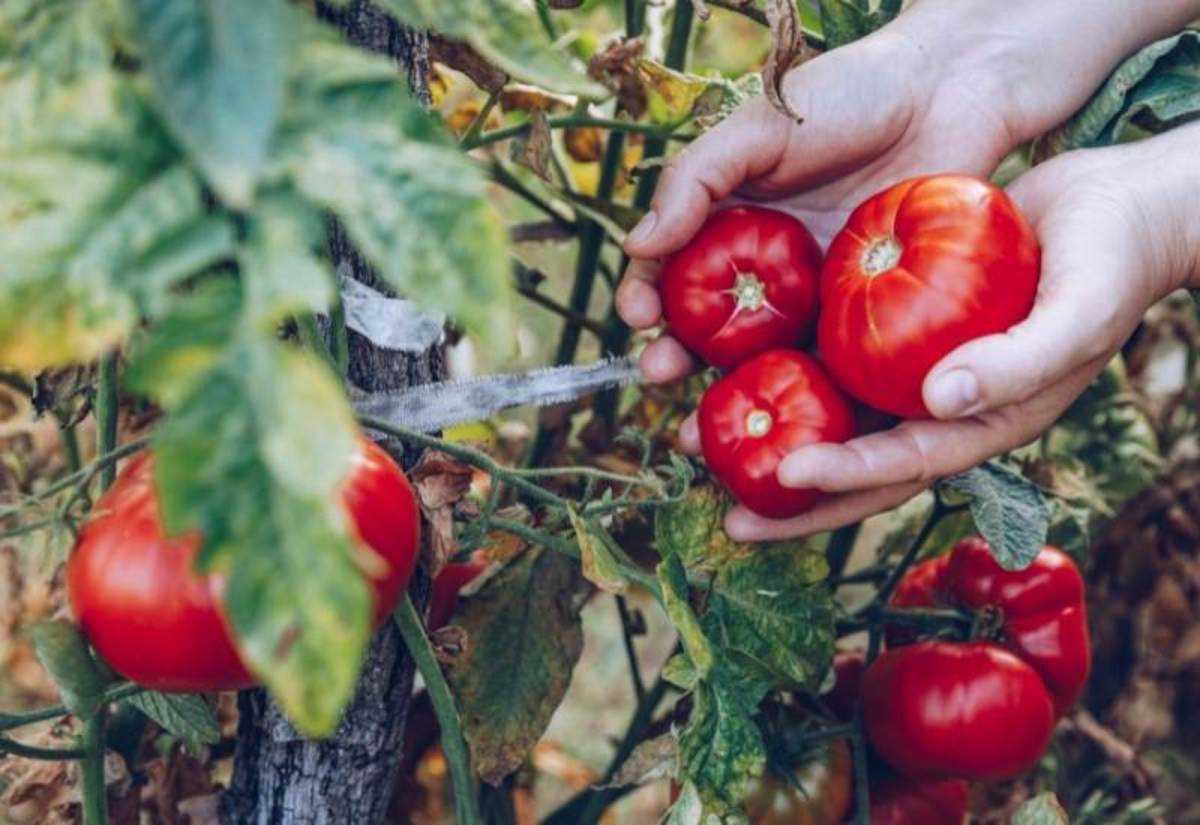
Regularly monitor your tomato plants for common pests and diseases such as aphids, tomato hornworms, and early blight. Implement pest control measures, such as using insecticidal soap or organic pesticides, to prevent infestations. Additionally, practice crop rotation and proper sanitation to minimize the risk of disease outbreaks.
8. Harvesting at the Right Time
Finally, the key to achieving maximum harvests is knowing when to pick your tomatoes. Harvest them when they are fully colored and firm, but with a slight give when gently squeezed. Overripe tomatoes may start to rot or attract pests, while underripe ones may not ripen properly off the vine.
By following these methods and providing the necessary care, you can ensure healthy and productive tomato plants, leading to bountiful harvests of delicious tomatoes.
Tomato Wilting Prevention Techniques
1. Proper Irrigation:
One of the most important techniques for preventing tomato wilting is ensuring proper irrigation. Tomatoes require consistent moisture in the soil to thrive. Overwatering can lead to waterlogged roots, while underwatering can cause stress and wilting. It is important to monitor the moisture levels in the soil regularly and adjust the watering schedule accordingly.
2. Mulching:
Mulching is an effective technique for preventing wilting in tomatoes. Applying a layer of organic mulch, such as straw or wood chips, around the base of the plants helps to retain moisture, regulate soil temperature, and control weed growth. Mulching also helps to prevent evaporation, keeping the roots cool and reducing water loss.
3. Proper Plant Spacing:
Proper plant spacing is crucial for preventing tomato wilting. When plants are overcrowded, they compete for resources such as sunlight, water, and nutrients. This can lead to stress and wilting. It is important to plant tomatoes at the recommended spacing to allow for adequate air circulation and prevent the spread of diseases.
4. Disease Management:
Tomato wilting can also be caused by fungal or bacterial diseases, such as Fusarium wilt or bacterial wilt. Proper disease management practices, such as using disease-resistant varieties, practicing crop rotation, and removing infected plants, can help prevent the spread of diseases and reduce tomato wilting.
5. Proper Nutrient Management:
Ensuring proper nutrient management is essential for preventing tomato wilting. Tomatoes require a balanced supply of essential nutrients, such as nitrogen, phosphorus, and potassium, to grow and resist stress. Regular soil testing can help identify nutrient deficiencies or imbalances, allowing for targeted fertilization to prevent wilting and promote healthy growth.
| Technique | Description |
|---|---|
| Proper Irrigation | Monitor moisture levels and adjust watering schedule accordingly. |
| Mulching | Apply organic mulch to retain moisture, regulate soil temperature, and control weed growth. |
| Proper Plant Spacing | Plant tomatoes at the recommended spacing to allow for adequate air circulation and prevent competition. |
| Disease Management | Use disease-resistant varieties, practice crop rotation, and remove infected plants. |
| Proper Nutrient Management | Ensure a balanced supply of essential nutrients through regular soil testing and targeted fertilization. |
Maintaining Soil Moisture and Air Circulation
One of the key factors in preventing tomato wilting is maintaining proper soil moisture levels. Tomatoes require consistent watering to ensure their roots receive enough moisture. However, overwatering can lead to poor soil drainage, which can cause root rot and ultimately lead to wilting. On the other hand, underwatering can cause the soil to dry out, depriving the plant of essential moisture.
To maintain soil moisture, it is important to water tomatoes regularly and evenly. Water deeply, making sure the water reaches the roots. Avoid frequent shallow watering, as it encourages shallow root growth, leaving the plants more susceptible to wilting during dry periods.
In addition to watering, providing adequate air circulation is also crucial for preventing tomato wilting. Good air circulation helps to reduce humidity levels around the plants and prevents the buildup of moisture, which can contribute to the development of fungal diseases.
To improve air circulation around tomato plants, it is recommended to space them adequately apart. This allows air to move freely between the plants, reducing the chances of stagnant air pockets. Additionally, removing any overcrowded or dense foliage can help promote better air circulation.
Furthermore, pruning the lower leaves of tomato plants can prevent them from touching the ground, as soil-borne pathogens can easily spread through contact. Using trellises or stakes to support the plants can also keep them off the ground and improve air circulation.
In summary, maintaining proper soil moisture levels and ensuring adequate air circulation are essential for preventing tomato wilting. Regular and deep watering, along with proper spacing, foliage management, and support, can greatly contribute to the health and productivity of tomato plants.
“Question-Answer”
What is the article about?
The article is about a study conducted to investigate the ability of a certain blend to boost tomato plants’ resistance to wilting.
Why is tomato wilting ability important?
Tomato wilting ability is important because wilt disease is a major threat to tomato plants, causing significant yield losses.
What is the intriguing blend mentioned in the title?
The intriguing blend mentioned in the title is a mix of various natural ingredients that is believed to enhance tomato plants’ ability to resist wilting.
What were the results of the study?
The study found that tomato plants treated with the intriguing blend showed significantly higher resistance to wilt disease compared to the control group.
What are the potential implications of these findings?
The findings of this study have potential implications for tomato growers, as the use of the intriguing blend could help minimize yield losses caused by wilt disease.
Are there any limitations to the study?
Yes, one limitation of the study is that it was conducted under controlled conditions, and further research is needed to validate the findings in real-world agricultural settings.
What are some natural compounds that could potentially boost tomato wilting ability?
Some natural compounds that have shown potential in boosting tomato wilting ability include seaweed extract, beneficial bacteria, and certain plant extracts rich in antioxidants.







